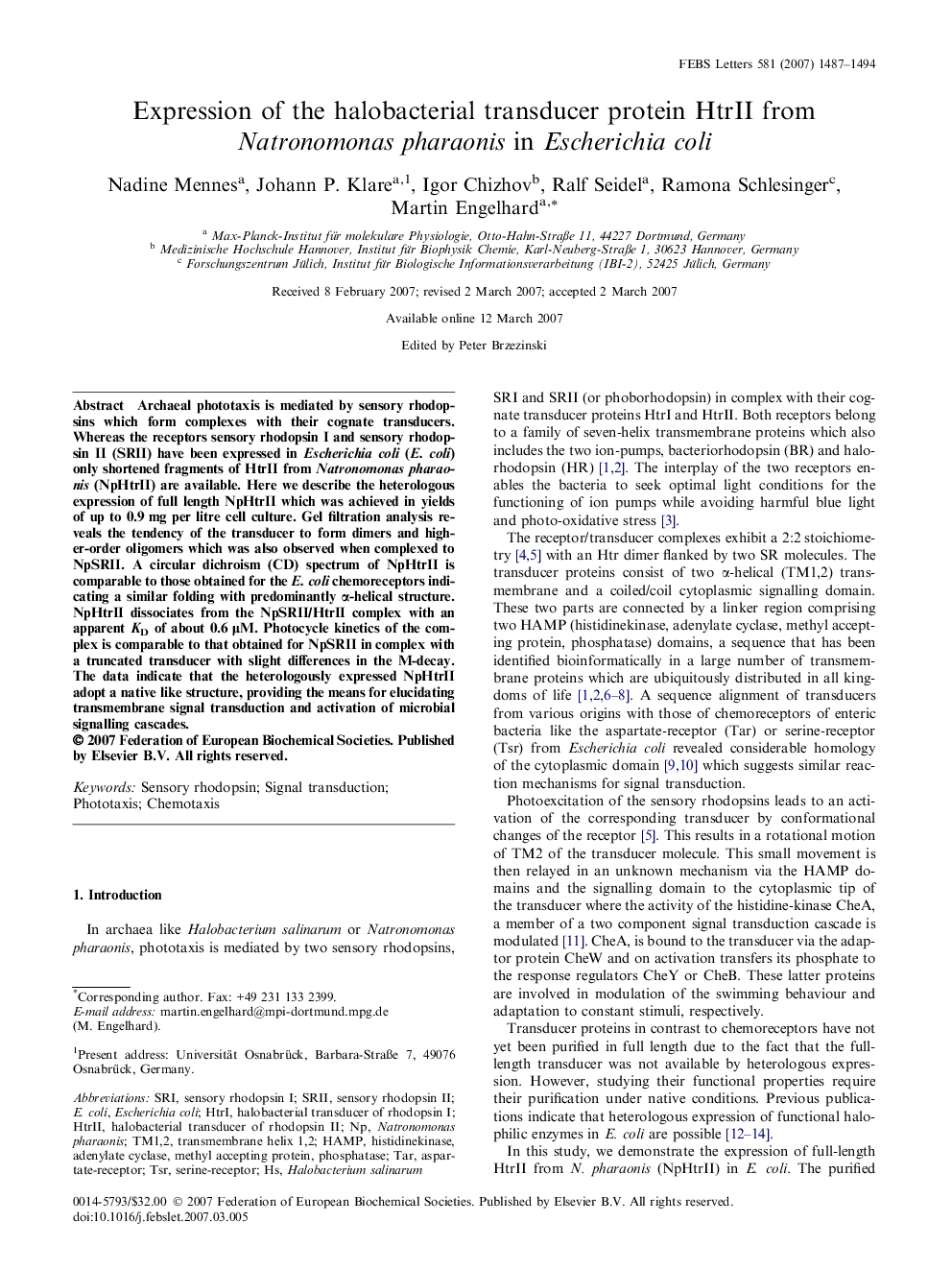| Article ID | Journal | Published Year | Pages | File Type |
|---|---|---|---|---|
| 10872635 | FEBS Letters | 2007 | 8 Pages |
Abstract
Archaeal phototaxis is mediated by sensory rhodopsins which form complexes with their cognate transducers. Whereas the receptors sensory rhodopsin I and sensory rhodopsin II (SRII) have been expressed in Escherichia coli (E. coli) only shortened fragments of HtrII from Natronomonas pharaonis (NpHtrII) are available. Here we describe the heterologous expression of full length NpHtrII which was achieved in yields of up to 0.9 mg per litre cell culture. Gel filtration analysis reveals the tendency of the transducer to form dimers and higher-order oligomers which was also observed when complexed to NpSRII. A circular dichroism (CD) spectrum of NpHtrII is comparable to those obtained for the E. coli chemoreceptors indicating a similar folding with predominantly α-helical structure. NpHtrII dissociates from the NpSRII/HtrII complex with an apparent KD of about 0.6 μM. Photocycle kinetics of the complex is comparable to that obtained for NpSRII in complex with a truncated transducer with slight differences in the M-decay. The data indicate that the heterologously expressed NpHtrII adopt a native like structure, providing the means for elucidating transmembrane signal transduction and activation of microbial signalling cascades.
Keywords
Related Topics
Life Sciences
Agricultural and Biological Sciences
Plant Science
Authors
Nadine Mennes, Johann P. Klare, Igor Chizhov, Ralf Seidel, Ramona Schlesinger, Martin Engelhard,
